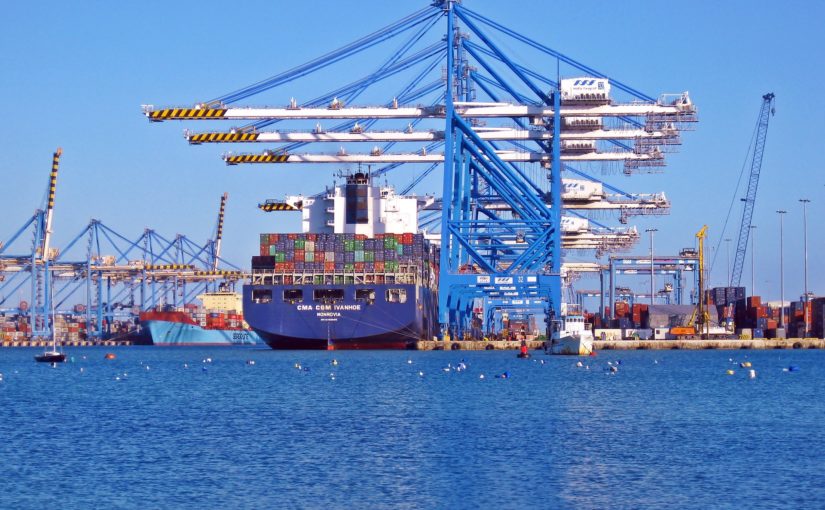As seen in the previous blog, sustainable maritime transport is all about facilitating efficient and timely transport of goods across the world, over huge distances, while ensuring the continued sustainability, growth, and prosperity of the entities involved. In this chain of a sustainable maritime transportation system, every link is inspected, evaluated, and optimized at regular intervals, to ensure smooth and uninterrupted functioning for maximum efficiency.
Several actions can be taken to ensure this sustainability in maritime transport; some of which we have already seen in the previous article. Developing a strong safety culture and encouraging environmental stewardship, as well as providing advanced training and education in maritime professions are two of the ways in which sustainability can be increased.
Apart from these, there are several other methods of achieving sustainability in maritime transport. These include:
Increased Energy Efficiency and Improved Ship-port interface
As of now, shipping is the most cost-effective way to transport goods across the world, considering the fuel required v/s volume of goods ratio. However, the need for increasing ship efficiency is still urgent and consistent. Shipping and boat manufacturers of today are continuously looking for new and advanced techniques to reduce their carbon footprint and hence improve ship efficiency to the maximum extent possible.
This approach is important because the volume of goods expected to be transported in the near future is set to increase exponentially. However, improving the carbon footprint of the maritime transportation system is not dependent only on ship operation, it involves equal participation of shore-based entities, namely, ports.
Providing the essential maritime structure in such a manner that the logistics, cargo handling, vessel management, and routing protocols are optimized is one of the ways in which ports can contribute towards increasing the sustainability of maritime transport. Several new ports opening in the world are placing this idea of improving sustainability up front and center, thereby aiming to minimize unnecessary delays and maximize process efficiency.
The primary goal for achieving a sustainable maritime transportation system should be to smoothen this ship-port interface which will help increase efficiency beyond the ship operations. Streamlining and standardization of documentation at a national and international level for increasing loading and unloading efficiency, improving coordination, and developing the use of electronic systems as opposed to manual labor is a must. Smart ports are the future of maritime transport and can go a long way in making the system sustainable.
The second goal should be to keep this efficiency functioning at the maximum level once it has been achieved. For instance, once a ship starts operating at optimum efficiency, efforts should be made to keep it going so, through regular maintenance and upkeep. The logistics infrastructure should support the running of ships at ideal speeds for energy conservation along their charted trajectories.
The idea is to create a holistic environment where both, offshore and onshore, entities play their parts effectively to ensure a completely sustainable maritime transportation system.
Boost Energy Supply for Ships
The IMO 2020 cap on sulfur emissions for ships has required boat and ship manufacturers to rethink their entire design process to increase the efficiency of the ships manufactured. The fact remains that though ship efficiency can be increased, ships cannot operate completely without fuel. Hence, increasing the supply of energy for ships through other sources is now a matter of priority.
On one hand, the use of new and advanced technology to curb greenhouse gas emissions, such as on-board treatment facilities, is imperative. On the other hand, establishment, and implementation of fixed standards, to ensure proper quality standards for the fuel supplied, is also necessary.
This can be achieved by the global distribution of marine fuels such that uniform availability is maintained throughout. Port facilities should preempt the future fuel requirements and accordingly make arrangements so that an uninterrupted flow of transport is achieved. Making fuels easily and readily available is a necessary action to be taken for building a sustainable maritime transportation system.
Using clean energy should be the second action towards increasing sustainability. LNG and low-sulfur oils are ideal options for sustainability-conscious manufacturers and should be integrated into the process at the earliest. Going further, the cost of these relatively expensive fuels should be borne by the entire maritime community as a whole, rather than just the users. This will lead to greater acceptance and willingness for the adoption of green fuels.
Mutually beneficial partnerships between the shipping industry and the fuel suppliers can be a great way of increasing the use of such fuels in ships. The researchers and suppliers can create new fuel type to improve ship efficiency while the shipping industry can provide bunkering facilities for the same. Down the line, the partnerships can extend to port planning, maritime administration, and creation of a stable transportation system in conjunction with cargo owners and industries.
Endnote
These were a few actions that need to be implemented on priority for improving maritime sustainability. Apart from these, some of the other actions that can be taken to help build a sustainable maritime transportation system include the development of maritime traffic support and advisory systems, improved maritime security, advanced technical co-operation, adoption of new technology and innovation, streamlining of finance, liability, and insurance mechanisms, and harmonious ocean governance.
Creating a sustainable future for the maritime industry is the need of the hour and hence, all these actions need to be given deep thought. It is important to remember that achieving sustainability is global endeavor and all seafaring nations need to work together towards this common goal.
What are your thoughts on the actions to improve sustainability in maritime transport? Share your insights with us in the comments section below!



